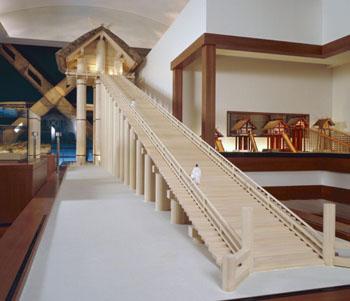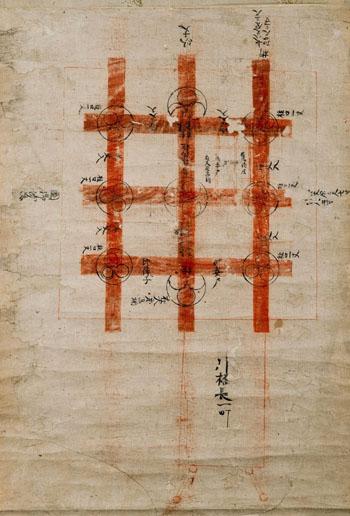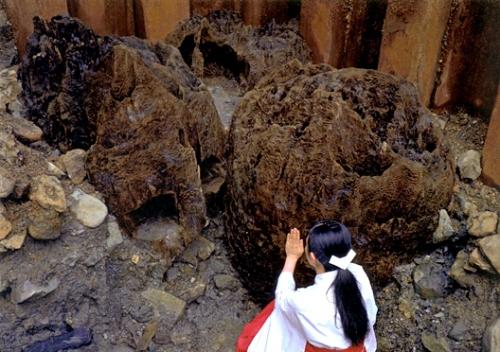Ancient shrine documents and archaeology suggest that the Izumo Grand Shrine was once a colossal skyscraper of ancient Japan
Source -http://heritageofjapan.wordpress.com/
Drawing offers tantalizing hint of ancient high-rise

Scraping the sky: A model of a 48-meter-tall structure at Izumo Taisha Shrine in Shimane Prefecture, based on the ancient design drawing (below), is on display at the Shimane Museum of Ancient Izumo. KYODO

Photo: KYODO
Izumo Taisha Shrine in Izumo, Shimane Prefecture, is displaying the original design drawing for what is believed to be an ancient high-rise some 48 meters high.
The Shimane Museum of Ancient Izumo is set to launch a study on the drawing to determine if or when the structure existed by examining letters written on the original drawing. Until now, a copy drafted in the Edo Period (1603-1867) was on display.
The original, on show in the shrine’s treasure hall until Sunday, had been kept by the family of the chief priest for generations. The shrine decided to show the original to the public to mark the start of major repair work on its main structure, which takes place about every 60 years.
In 2000, a gigantic pillar comprising three cedar logs whose existence had been suggested by ancient documents was excavated on the shrine’s grounds, lending credibility to the possibility the high-rise once stood there.
After Sunday, the drawing, which is 42.5 cm by 30 cm, will be displayed at a series of other locations, including the Tohoku History Museum in Tagajo, Miyagi Prefecture, and the Kyoto National Museum.
***
Exhibition of “Uzu” pillars in the main lobby unearthed within the Izumo Grand Shrine precincts

Source: Shimane Museum of Ancient Izumo
From 2000 through 2001, giant pillars were discovered at three places within the Izumo Grand Shrine precincts. Each pillar consisted of three Japanese Cedar trees bundled together and was about three meters in diameter overall. This is an example of a “Munamochi” pillar which supports the ridge of the roof, called the Uzu pillar. Thanks to an abundance of ground water in the shrine area, the pillars were excavated in a very good condition and were almost in their original condition.
The pillar holes, which are about six meters in diameter at the maximum, were filled with rocks as big as a human head or bigger. They illustrate a subsurface structure of Hottate-pillars, which were unprecedented at the time, being driven directly into the ground without stone foundations. The layout and arrangement of the pillars resemble in a ground plan that has been passed down through the Kokuso family, from whom the high priest of the Izumo Grand Shrine is chosen.
Scientific analysis, archaeological records, paintings, and an examination of documents suggest it is highly possible that this pillar supported the main shrine building, which was built in 1248, or in the first half of the Kamakura Period.
Source: Shimane Museum of Ancient Izumo